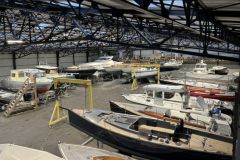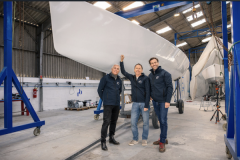A composite panel that is too stiff and imperfect
In the latest episode of the refit of Duracell, his former 60 footer, Matt prepared the top of the future roof by laminating a large foam panel on one side. Temperatures in the northern US as winter approaches are very low, and he took care to build a mini "home oven" to maintain an acceptable temperature for curing the resin.
But when the vacuum bag is removed, the appearance of the panel is disappointing and worrisome: the resin has left voids and the surface is not smooth.
Matt still tries to mount the piece on the boat and bend it on the roof rails. The penalty is immediate. The panel cracked, and despite attempts to repair it, then to recover the raw material, everything had to be thrown away.
Lessons for better vacuum lamination
After the disappointment, Matt lists in the next episode the lessons of this failure. For his next attempt, Matt chooses a slow-curing epoxy resin, to have time to work calmly, with the help of a friend. He also made a melamine frame to make the vacuum packing on a flat surface.
The result is much better, with a surface appearance that will be much easier to work with and paint in the future, and superior strength, in the absence of voids.
Facilitate bending
When it comes to the bending stage, Matt also prepares the operation. Instead of just pressing on the large panel, he makes cuts in the foam at the axis of the roof. This makes it easier for the part to take its shape. Screwed onto the stiffeners, it finally fits the ribs.
Learning from the mistakes, Matt can then tackle the mainsail traveler bulkhead.









